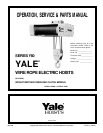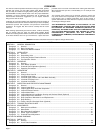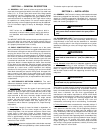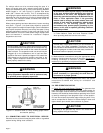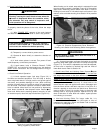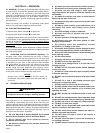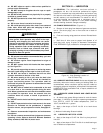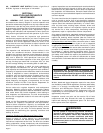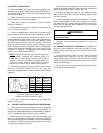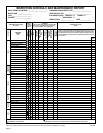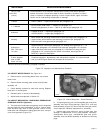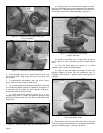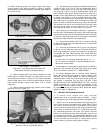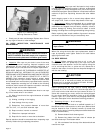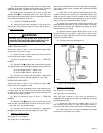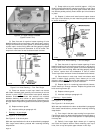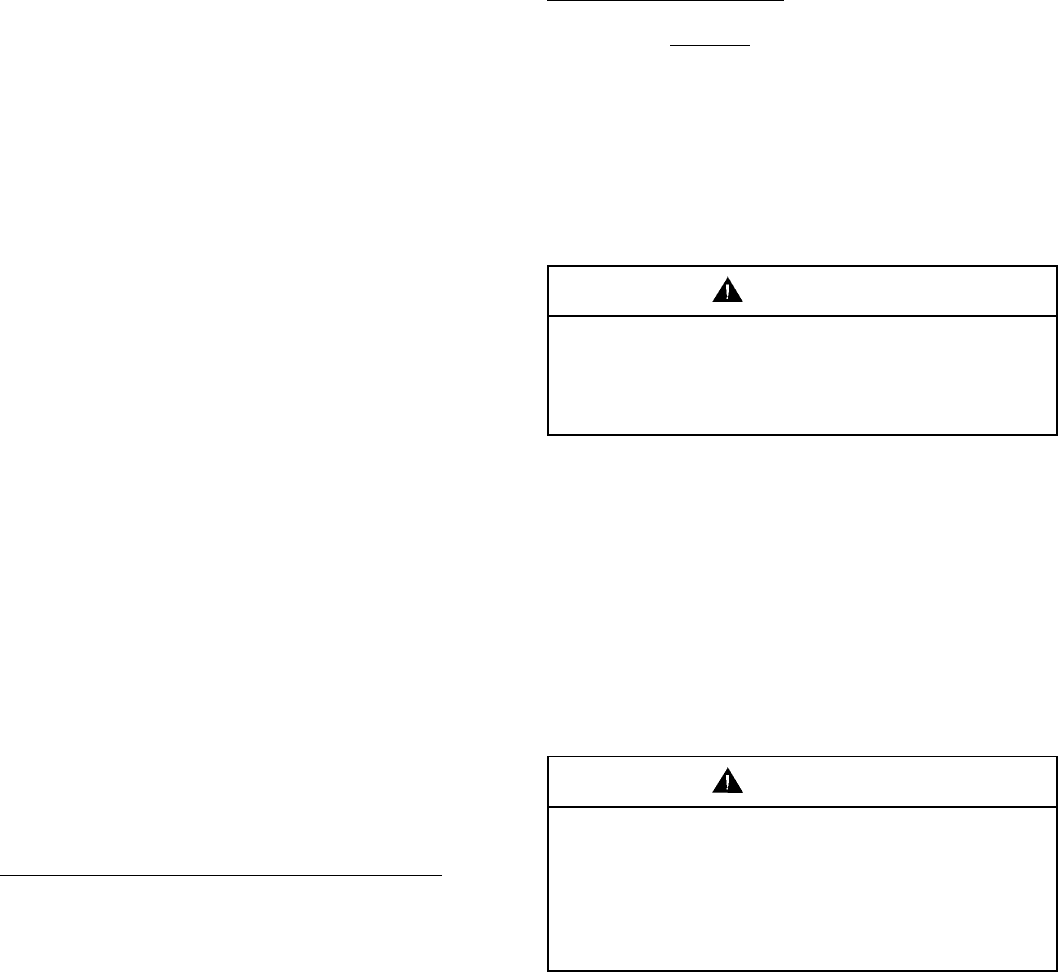
Page 8
reports. Inspections are recommended each month and should
be performed thoroughly enough to inform the hoist user of
deficiencies for any item listed. This form does not supersede
the Inspection and Maintenance Schedule listed below but
may be used to record scheduled inspection and maintenance
services required.
The user should revise the inspection interval, add additional
units or provide a similar form to suit particular conditions
which may exist. However, written, dated and signed inspection
reports should be maintained particularly on critical items,
such as hoist hooks, hoisting ropes, sheaves, drums and
brakes. Periodic review of old inspection reports can point
out service life of hoist components, forecasting need for
adjustment, repair or replacement of these components.
As a matter of expedience, appointed maintenance personnel
inspecting the hoist can also take care of minor adjustments,
repairs and cleaning, where required. Note the column on
Inspection Schedule and Maintenance Report form headed
Corrective Action and Notes. When corrective action is made
during inspection, note condition of part or unit as inspected
in appropriate
Condition column with a check mark (ü). Note
“during inspection” corrective action taken and date in space
provided. In this manner, items requiring further attention will
be checked (
ü) without showing corrective action. This will
advise the designated person responsible for hoist operation
and safety, who reviews the reports, that deficiencies exist.
The designated person will check all deficiencies as listed
and reexamine or otherwise determine whether they constitute
a safety
Written, dated and signed inspection reports for many items
are mandatory under OSHA regulations, and many state safety
codes. It is strongly recommended that the Inspection
Schedule and Maintenance Report, shown herein, be
completed by a qualified person designated with the
responsibility for hoist operation and safety or an inspector
appointed by this person.
Inspection records can point out the service life of hoist
components and help forecast the need for adjustments,
repairs and ordering of replacement parts. File and review
these reports after each inspection.
4-6. LUBRICATE LIMIT SWITCH. Provide a light film of
NLGI No. 2 grease on bevel gear of limit switch.
SECTION V
INSPECTION AND PREVENTIVE
MAINTENANCE
5-1. GENERAL. YALE, Series 800, hoists are inspected
and tested at the factory. Regular in service inspection and
preventive maintenance programs not only help reduce overall
maintenance costs but may also prevent serious shutdowns
by forewarning of problems that could cause these shutdowns.
Regular inspections, periodic minor adjustments, regular
cleaning and lubrication and replacement of worn parts can
help preserve good performance and operation of your hoist.
Many factors influence the inspection and preventive
maintenance program required for your hoist. Frequency and
severity of service and material handled, local environmental
conditions and various applicable codes are some of the
factors that the user must consider to adjust inspection and
maintenance program outlined in this section to meet his
specific conditions.
The inspection and maintenance services outlined in this
section are considered minimum. Recommended in the
schedule are minimum inspection and maintenance intervals
based on average daily use in a normal environment. Average
daily use is based on 1000 operational hours per year
maximum and intermittent operation of the hoist eight hours
per day, five days per week with a maximum 40% “on” time
and the average loading not exceeding 65% of rated load.
Environmental conditions in which the hoist operates are
also important considerations for the user when adjusting
hoist inspection and maintenance programs to local conditions.
Frequency of inspection and maintenance must be increased
if hoist is subjected to severe atmospheric environmental
conditions, such as corrosive vapors, extreme heat or cold,
cement or dust and other airborne contaminants. The user
should carefully consider all environmental conditions and
adjust frequency and degree of maintenance for his local
conditions. Consult Lift-Tech Field Service Department for
advice for unusual environmental conditions.
Various codes also regulate inspection and maintenance
programs. Attention must be given to applicable Federal
Standards, OSHA regulations, National Standards, state and
local codes which may include mandatory rules relating to
hoist inspection and maintenance. The user should become
familiar with all applicable codes for his area and be guided
accordingly.
Listed on the Recommended Inspection and Maintenance
Schedule are inspection frequencies and requirements.
Perform these inspections regularly as scheduled and
additional inspections as may be required for activity, service
and environment of your hoist. The hoist operator must be
responsible for determining the operating conditions and
severity of service.
Inspection Schedule and Maintenance Report Form.
Shown on page 10 of this manual is a recommended
Inspection Schedule and Maintenance Report form which
lists various components of the hoist. The form also includes
trolley components, runway components, and miscellaneous
items. This form is suggested as a guide for written inspection
Deficiencies may be hazardous to personnel and
equipment. Do not operate a hoist having deficiencies
unless a designated qualified person has determined
that these deficiencies DO NOT constitute a safety
hazard.
WARNING
Do not operate a hoist having unusual vibrations,
sounds or other conditions. Danger may be present
that the hoist operator cannot see. Determine and
correct cause of unusual conditions and make
certain the hoist can be operated safely. Be certain
to disconnect power to the hoist whenever electrical
cover is removed.
WARNING



